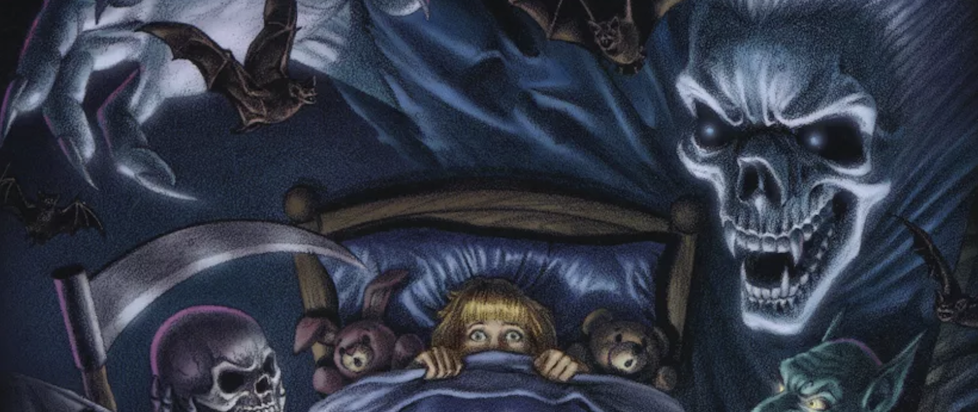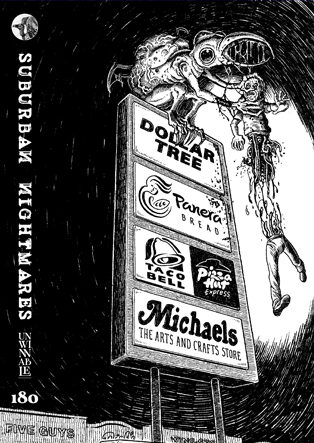
Midnight in the Garden of Goo: Going Haunting with Bump in the Night
I see board games in the store and they always look so cool and then I buy them and bring them home, I’m so excited to open them, and then I play them, like, twice…. This column is dedicated to the love of games for those of us whose eyes may be bigger than our stomachs when it comes to playing, and the joy that we can all take from games, even if we don’t play them very often.
***
I had never heard of Bump in the Night, a 2008 game designed by Colin Dimock, until I found a copy of it at a Half Price Books and picked it up for obvious reasons because look at that cover art. Digging into Bump in the Night, it is not at all surprising to learn that it comes from Twilight Creations, who are best known as the manufacturers of the seemingly never-ending series of Zombies!!! board games.
The reasons why this does not come as a shock are numerous, beginning with how similar the games look. From their relatively small boxes to the artwork on their room tiles to the modest but weirdly detailed monster miniatures, it’s fairly obvious that the same production team worked on Bump in the Night as on any of those Zombies!!! games. They also share a similarly odd admixture of professional and homebrew DIY aesthetics.
For those who aren’t familiar with the Zombies!!! games, it may be a little difficult to describe what I mean. Twilight Creations games all look good, for the most part (I mean, just look at those room tiles!) but they also somehow look less polished than their bigger budget competitors.
At times, this works in their favor, and specifically in Bump in the Night, there’s an odd sense that, somehow, what we’re pulling from are more weirdo Italian movies like Ghosthouse than more standard haunted house fare, giving the game a sort of mean-spirited edge.
Amplifying this slightly vicious quality is the fact that the victims in Bump in the Night are all represented by identical pawns of “little girls” clutching teddy bears. According to the game’s single paragraph of brief backstory, “a large group of kids” are spending the night in a haunted house, “daring each other to face the terrors until the break of dawn.”

In a twist on the usual structure for a game like this, however, the players do not take control of the kids in question. Rather, each player has a menagerie of six “monsters,” which they will use to terrify the kids out of their wits, thereby “feed[ing] on the psychic energies of fear.” These include a black cat, some “scary bats,” a goblin, a poltergeist (with a delightful miniature that is removing its own head), a ghost, and the specter of Death itself.
Each of these monsters scare people different amounts, and also have other special rules that take effect when they come into play. The goal is to either frighten a victim out of the house altogether or raise their “terror level” until it reaches a fever pitch, at which point they are removed from play and you score a point.
What could be a fairly simplistic system, however, becomes intensely complicated by a handful of details. For starters, the amount that a monster scares a person is not static. Certain monsters scare victims more than others, to be sure, but the creepiness of the room also plays a role, as does the number of people in it – lone victims are more easily frightened than those in big groups.
The second wrinkle comes from what the people do when they are scared which is… run away. A five-step chart for determining movement priority decides where a frightened victim will run, which potentially allows you to steer them into other monsters. If they go careening into a room with one of your other monsters, that’s good, but scaring them with another player’s monster may be even better – for both of you.
Ultimately, the goal is to collect the most points by scaring the most people either out of the house or… to death, I guess? The game never really states what happens to a person whose terror level gets too high, except that they’re removed from play and you score a point.

It’s what one reviewer on Board Game Geek calls a “surprisingly neat thinker with horror theme,” and the strategizing around trying to plan the movements of the victims can become pretty granular, which is why the box suggest that this simple-looking little game requires a massive “60 to 90 minutes to play.”
As is often the case with games like this, the fairly short rulebook can also get a little confusing, even with its frequent examples of how play works. This has led to numerous threads online of people seeking clarification, with answers sometimes coming from the game’s designer himself.
Complicating all of this further is a deck of cards which can be utilized at various times either during your turn or when certain conditions are met on an opponent’s turn. These can further alter the rules and change the dynamics of play. They are also another example of the game’s low-budget aesthetics, as they sometimes contain typos, as in one memorable card which was probably supposed to read “Midnight in the Garden of Good and Evil” but instead just says “Midnight in the Garden of Goo.”
———
Orrin Grey is a writer, editor, game designer, and amateur film scholar who loves to write about monsters, movies, and monster movies. He’s the author of several spooky books, including How to See Ghosts & Other Figments. You can find him online at orringrey.com.





